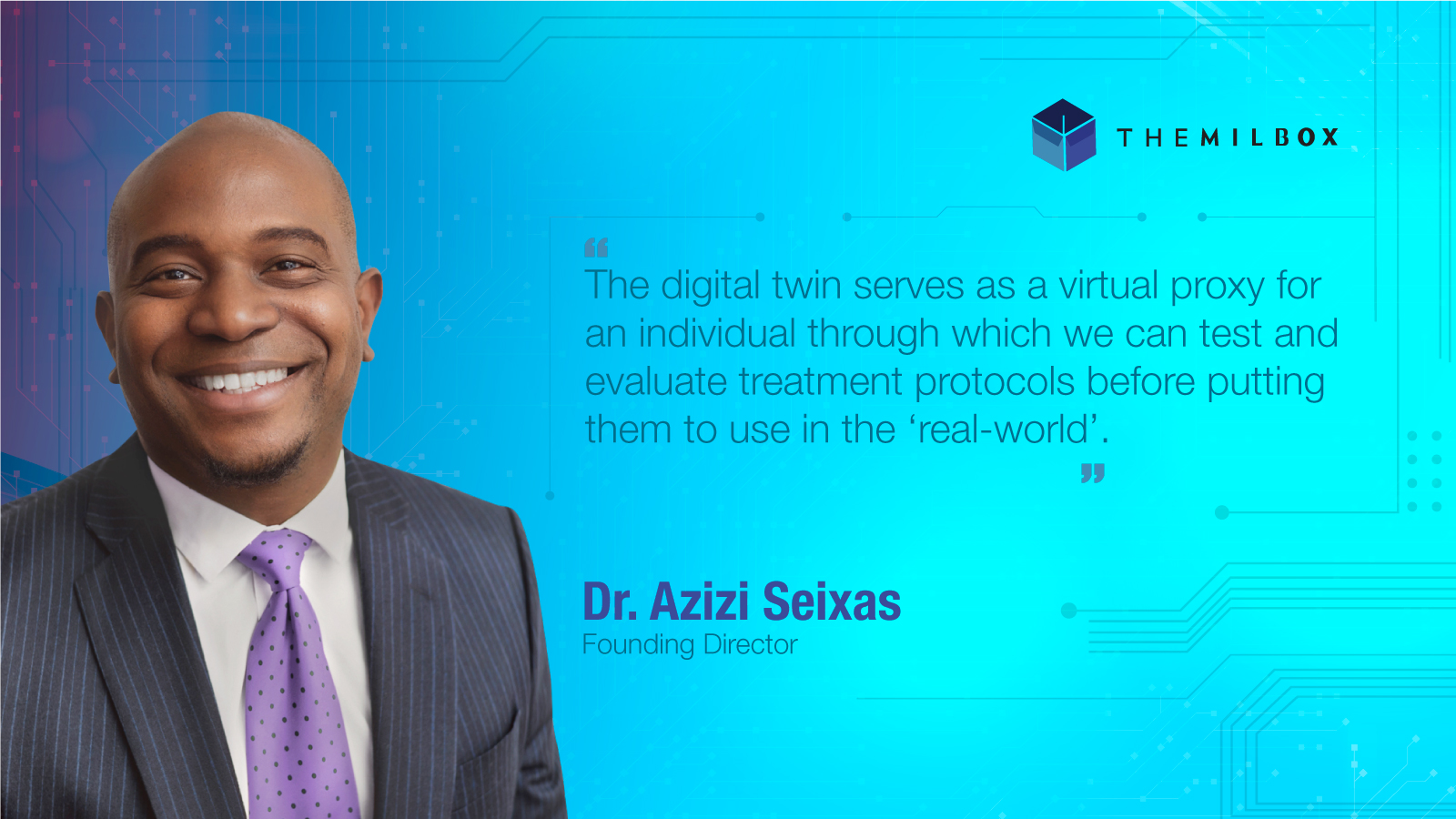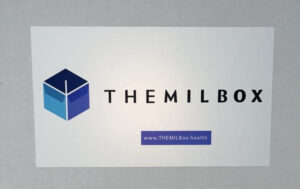AiThority Interview Series with Dr. Azizi Seixas, Director at Media and Innovation Lab (TheMIL)

Hi Dr. Azizi, welcome to AIThority Interview Series. Tell us about your journey in this space and how you started at TheMIL.
I have always had a keen interest in exploring how technology can help overcome disparities in healthcare delivery. Under the current paradigm, technological advances in care are first made accessible to the chosen few and eventually over the course of many years and decades, as the technology matures and the costs plateau and ultimately decrease, technology becomes available to the masses. This isn’t just a healthcare phenomenon. The disparities of the technology gap have been demonstrated across our society. I’ve been aware of it since my early childhood in urban Jamaica. For no fault of our own, myself, my mother and my grandmother lived on the far side of the disparity gap.
Throughout my academic career at NYU and now as the founding director of the Media and Innovation Lab (The MIL) at the University of Miami, I have focused on a methodology to change this fundamental healthcare paradigm. While there is no easy answer, I do see a pathway and that’s what we are exploring at The MIL. The University of Miami has made an incredible investment in building a culture of innovation that spans five key on five key components of academic medicine, including medical education, clinical care, research, community service and outreach, and venture opportunities. With these pillars in mind, The MIL will serve as a locus for learning, collaboration, and investment in the emerging technologies, systems, and solutions to shape the future of healthcare.
The MIL is an engine for change, driving new ways of learning, collaborating, and investing in the emerging technologies, systems, and solutions that will shape the future of healthcare for the benefit of all. The relationship between healthcare and technology is extraordinary, and we know relationships require work. I am grateful for the opportunity to work with experts at the University and across the technology spectrum to reimagine what a more accessible and equitable health care system looks like and what it can do for all.
Recommended: AiThority Interview with Nelson Petracek, CTO at TIBCO Software
What were the major challenges that you dealt with during the pandemic months? How did the pandemic influence the new trends in medical innovation and healthcare data/ information reporting systems across the US?
The pandemic opened many eyes to the disparities that create very different realities for people within our society. While we have always understood the economic disparities that separate the haves from the have nots, the pandemic exposed the deep roots and wide implications of those disparities – particularly when it comes to accessing and using the technologies that many of us take for granted to operate our daily lives.
The health disparities in underserved communities are undeniable; while average life expectancy is increasing, it is decreasing among groups including racial/ethnic minorities, the under or uninsured; and low-income families. As healthcare costs continue to skyrocket, these communities are suffering consequences such as limited or no access to care; high disease burden; and premature death.
The other side of that coin, however, is massive opportunity. The pandemic also accelerated the use of and widespread acceptance for distributed healthcare, enabled by technology. Telemedicine became a first line of healthcare. Remote monitoring and data collection became viable methodologies for not only daily care, but to spur research and development.
Any key learning from these domains that you would like to share with our readers:
We are working at the intersection of these two trends to ask the question: how can we use technology in a different way to reach and serve people who have too often been left disenfranchised by the system? We see a massive opportunity to use off-the-shelf technologies that are imminently accessible and highly affordable to transform the health and wellness of entire communities of previously marginalized and underserved people. The MIL and The MILBox program are at the forefront of this movement.
Tell us a little bit about your recent innovation – The MILBox.
The MILBox encompasses a digital box, which serves as a launchpad for apps, solutions, content, wellness resources, and data, and a physical box that gets sent to study participants’ homes. The physical MILBox contains the most cutting-edge patient-worn and in-home devices on the market such as an ambulatory blood pressure monitor, an actigraph to measure sleep and wake cycles, a smart scale, an air quality device, and a mobile phone to securely transmit data to the cloud. Not all of the boxes are identical; the components of each are selected based on the participant’s initial health screening, providing an even more personalized profile.
These wearable and nearable devices gather longitudinal data over seven consecutive days for each participant. The results of those measurements are then combined to create a “biological health algorithm” that’s unique to the individual, like a fingerprint. This algorithm serves as a digital twin of the individual allowing healthcare practitioners to employ artificial intelligence (AI) to virtually test and evaluate various treatment options and potential outcomes before applying them in the physical world.
All of this is based on earlier research funded by the National Institutes of Health (NIH) that we started at NYU. Now we are ready to put that research into deeper clinical practice and examine the connection between poor sleep and serious health disorders including heart disease and dementia. We are currently recruiting a diverse group of 1,500 participants with particular emphasis on traditionally underserved communities or communities of color to participate in the program.
Recommended: AiThority Interview with Nithinan Jessie Boonyawattanapisut, Co-CEO & Director at NextPlay Technologies
How do you leverage AI and machine learning in the development of a digital twin for patients? What does the digital twin for patients look like? Could you please elaborate?
The digital twin serves as a virtual proxy for an individual through which we can test and evaluate treatment protocols before putting them to use in the ‘real-world.’ To create a three dimensional digital twin, however, we must take into account more than just physiologic or biologic measures. We must also understand and capture the environmental factors that might impact someone’s health and their ability to comply with certain treatment interventions. That’s where smart home technologies come into play.
AI and machine learning are required to mine this massive amount of longitudinal data and to help us apply predictive techniques to individual treatment protocols. Additionally, as we establish a data lake with accumulated data from across our entire enrolled participant population, we can mine for clinical insights on a population health level. When fully realized, The MILBox would operate at these two scales, providing personalized precision medicine while simultaneously supporting population health.
What kind of compliance framework should healthcare leaders have in place to ensure data teams don’t breach PII data governance policies? How are you doing at MILBox project?
Healthcare leaders need a solid compliance framework in place to ensure private information remains private but is still easily accessible by treating healthcare professionals. It’s imperative to have policy and governmental oversight around data security and ownership. For The MILBox, we’re following the guidelines set by the Human Subjects Research Institutional Review Board and are working closely with Open Health Network, using new security technical solutions — like Blockchain and others — to establish the procedures and safeguards necessary to create a solid compliance framework.
Tell us how is AI in the MILBox project transforming overall personalized wellness management processes. How is AI-based healthcare different from conventional human-centric activities such as those used in Marketing, Sales and Customer Services?
AI in healthcare is similar to any other application where the end objective is to affect behavior change. Projects like The MILBox cannot only focus on the physiologic and biologic data that we can capture in real time. We need to add that behavioral and environmental layer into the analysis to help assess the viability of the proposed health intervention. Any healthcare intervention is only as good as the patient’s ability or willingness to comply with the treatment. We need to inform and infuse a bit of realism into personalized medicine to recognize that balance and calculate not only which interventions hold the most promise, but also which interventions hold the promise of being used by those we serve.
Recommended: AiThority Interview with Scott Brinker, VP Platform Ecosystem at HubSpot
Your plans for 2022: What kind of future do you foresee for the AI in wellness market in North America?
The Media and Innovation Lab is building state-of-the-art digital therapeutics and innovative solutions to improve prevention, awareness, assessment, and adherence to chronic disease management, improve clinical trial literacy and participation among underserved communities, and create smart cities and homes through interconnected digital solutions.
Thank you, Azizi! That was fun and we hope to see you back on AiThority.com soon.
[To share your insights with us, please write to sghosh@martechseries.com]
The Media and Innovation Lab (The MIL) at the University of Miami Miller School of Medicine approaches the five components of academic medicine: education, clinical care, research, venture, and service and outreach as a comprehensive, interconnected system fueled by clinical insight, technology convergence and systemic change. With this approach, The MIL is driving new ways of learning, collaborating, and investing in the emerging technologies, systems, and solutions that will make health and wellness precise, personalized, innovative and accessible for all.









Comments are closed.